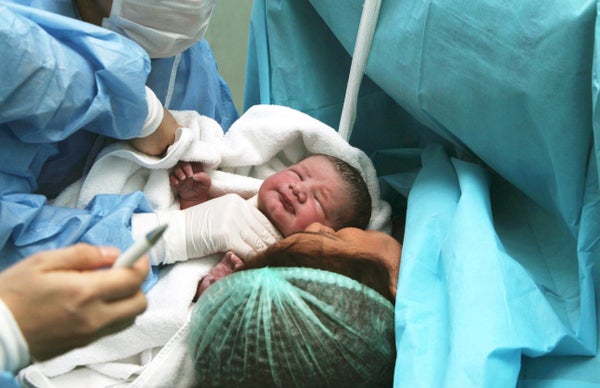This article was published in Scientific American’s former blog network and reflects the views of the author, not necessarily those of Scientific American
In this month’s Science Agenda column Scientific American’s editors make the case for widespread adoption of midwifery care in the U.S. One major advantage of such a shift would be a reduction in the cost of childbirth. Midwives boast lower rates of cesarean section and other pricey interventions compared with those of obstetricians. Moreover, women in midwifery care might choose to give birth at home or in a birth center, the costs of which are typically a fraction of those associated with hospital delivery.
So, just how expensive is it? Despite the fact childbirth is one of the most common reasons for hospital admissions in the U.S., it can be difficult for an individual to estimate how much she might end up paying to deliver a baby. Part of the problem is charges vary based on factors such as hospital location, type of delivery and the payer. Depending on a person’s income and insurance status, this can be quite an anxiety-inducing question.
As a curious data visualizer who, as it happens, will soon be giving birth in a New York City hospital, I decided to investigate. Perhaps the best source for this type of information is the Healthcare Cost and Utilization Project (HCUP), which aggregates health care data from all over the country and makes it available for anyone to search. Using this resource, I created an interactive visualization that lets users explore hospital-charge data for all HCUP-participating states.
On supporting science journalism
If you're enjoying this article, consider supporting our award-winning journalism by subscribing. By purchasing a subscription you are helping to ensure the future of impactful stories about the discoveries and ideas shaping our world today.
Credit: Amanda Montañez; Source: Agency for Healthcare Research and Quality, U.S. Department of Health and Human Services
The amount a hospital charges typically exceeds what ultimately shows up on a medical bill, so unfortunately these data do not reveal how much an individual or even an insurer actually pays. I have yet to find a source yielding that level of granularity. But the visualization at least provides a starting point and lets users see how their state compares with the rest of the country. It also provides powerful visual support for the idea that a move toward cheaper, midwife-led care would be a step in the right direction.
